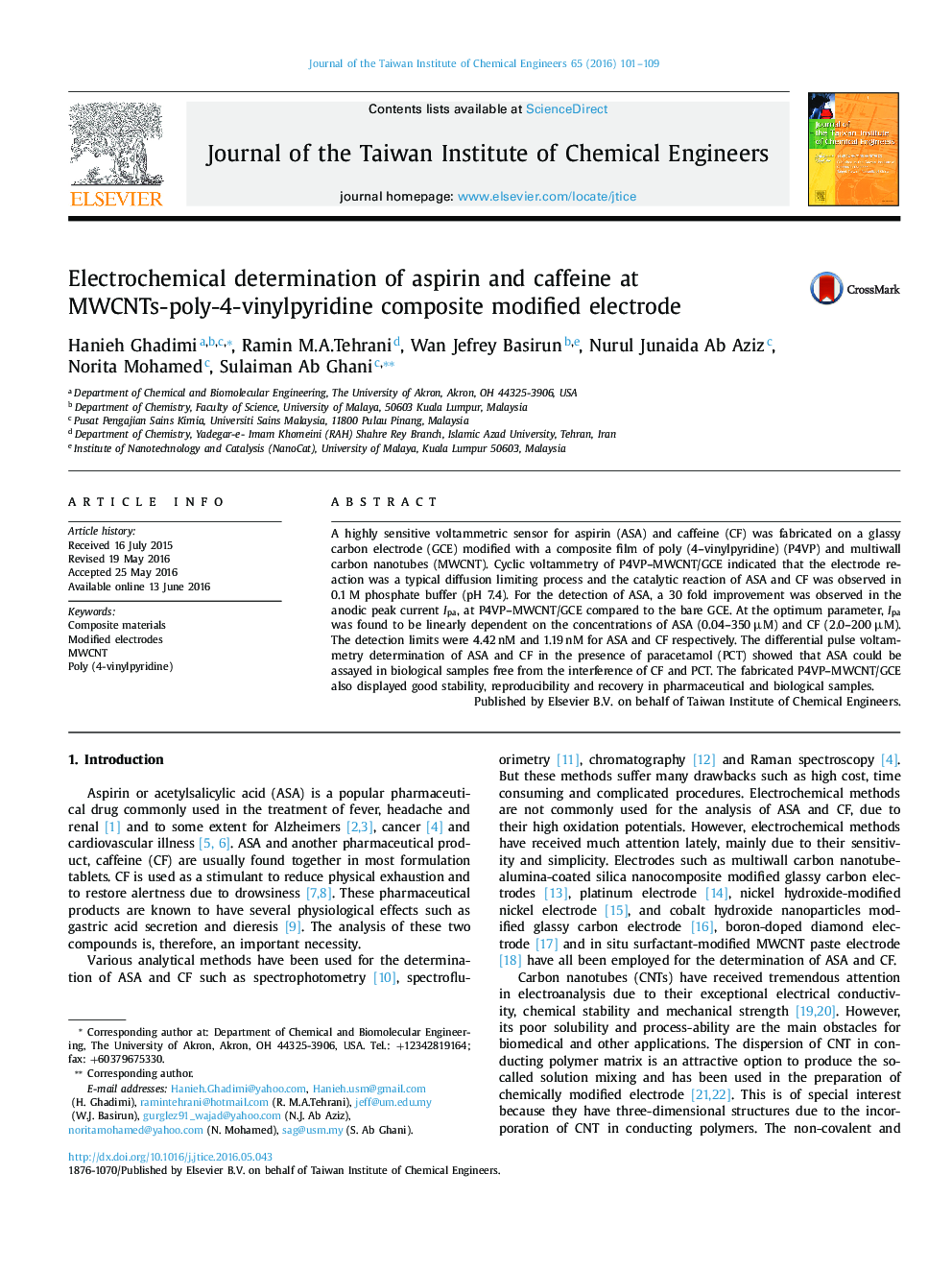| Article ID | Journal | Published Year | Pages | File Type |
|---|---|---|---|---|
| 690205 | Journal of the Taiwan Institute of Chemical Engineers | 2016 | 9 Pages |
•A poly(4-vinylpyridine)–MWCNT modified GCE was fabricated and characterized.•The P4VP–MWCNT/GCE is a new sensor for aspirin (ASA) and caffeine (CF).•Stability, reproducibility and high range of detection are the important characteristics of the prepared sensors which coordinated the properties of poly(4-vinylpyridine) and MWCNT.•Simultaneous determination of paracetamol, ASA and CF was successfully carried out.
A highly sensitive voltammetric sensor for aspirin (ASA) and caffeine (CF) was fabricated on a glassy carbon electrode (GCE) modified with a composite film of poly (4–vinylpyridine) (P4VP) and multiwall carbon nanotubes (MWCNT). Cyclic voltammetry of P4VP–MWCNT/GCE indicated that the electrode reaction was a typical diffusion limiting process and the catalytic reaction of ASA and CF was observed in 0.1 M phosphate buffer (pH 7.4). For the detection of ASA, a 30 fold improvement was observed in the anodic peak current Ipa, at P4VP–MWCNT/GCE compared to the bare GCE. At the optimum parameter, Ipa was found to be linearly dependent on the concentrations of ASA (0.04–350 µM) and CF (2.0–200 µM). The detection limits were 4.42 nM and 1.19 nM for ASA and CF respectively. The differential pulse voltammetry determination of ASA and CF in the presence of paracetamol (PCT) showed that ASA could be assayed in biological samples free from the interference of CF and PCT. The fabricated P4VP–MWCNT/GCE also displayed good stability, reproducibility and recovery in pharmaceutical and biological samples.
Graphical abstractFigure optionsDownload full-size imageDownload as PowerPoint slide
